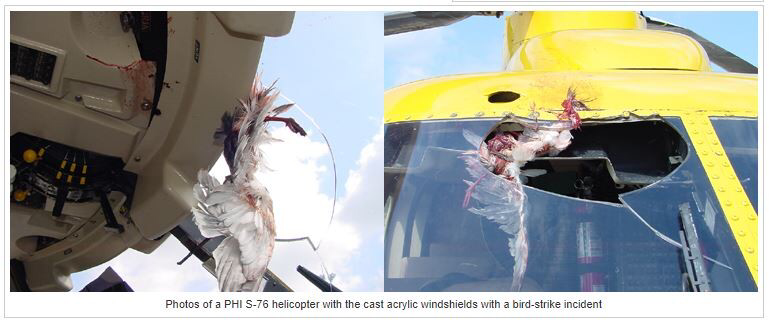Angry Birds: eVTOLs Need a Standard to Certify Vulnerabilities from Bird Strikes

The first bird strike in recorded aviation history occurred in 1905 by none other than Wilbur Wright. To be fair, Wright might have had it coming: he was chasing a flock of birds at the time.
Notably, the U.S. Rotorcraft Bird Strike Working Group found that no bird strikes occurred when the aircraft was flying at less than 55 knots. While this airspeed isn’t always practical, it can be useful in mitigating bird strikes along with the use of lights and color patterns that make eVTOLs more visible to birds.
Beware of flying chickens
Using freshly killed chickens, researchers at the Czech Aerospace Research Centre (VZLU) accelerated birds using compressed air through the smooth borehole of a gun barrel up to the required velocity according to specifications to predict the impact a bird will have on eVTOLs. Airspeed and the size of a bird, such as migratory geese, not surprisingly, also affects the damage an eVTOL might sustain from a bird strike.
In 2021, EASA published its Proposed Special Condition for small-category VTOL aircraft. It states that for Category Enhanced, occupants must be sufficiently protected from likely bird impact. Specifically, “the flight crew must be able to perform duties and the passengers must be protected from serious injury.”
Since most eVTOL will be flying below 3,000 feet above ground level and, not coincidentally, this is where more than 90% of bird strikes occur, EASA has proposed measuring the kinetic energy (KE) that occurs as a predictor of damage probability, not just altitude, bird size, and speed. This would facilitate certification by assigning a maximum kinetic energy value using bird mass and velocity with the equation KE = ½mv².
As the major eVTOL developers advance ever closer to full certification, mitigating damage from bird strikes, will be bring them one step closer to commercial operations.


